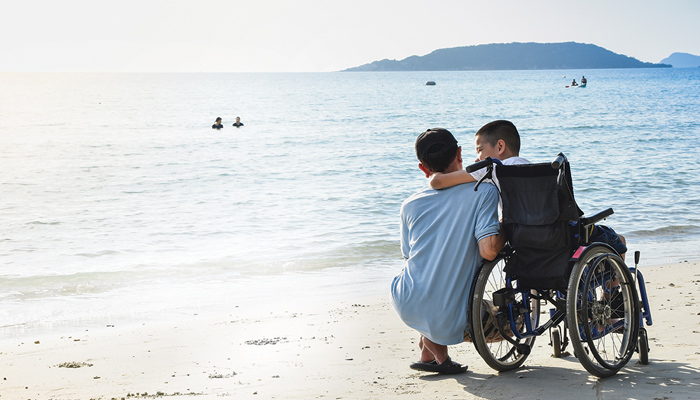
Muscat: One in four disabled citizens in the country is under the age of 17, according to figures published by the government.
Of the 42,304 people with disabilities, 10,880 are children, show data released by the National Centre for Statistics and Information (NCSI). 66.9 per cent of disabilities were diagnosed as congenital – handicaps present since birth – and another 23.8 per cent developed complications during birth that led to disability.
A further 4.7 per cent of disabilities were contracted through illness, while two percent were from hereditary conditions.
Multiple reasons were behind disability issues in 1.9 per cent of handicapped children, and 0.7 per cent of disabled children suffered handicaps because they were victims of accidents.
The report added that 23.9 per cent of disabled children have hearing impairments, 22.4 are physically challenged, 15 per cent are on the autism spectrum, 13.9 per cent have multiple handicaps, 11.4 per cent are intellectually disabled, and 10.2 per cent have Down’s syndrome.
1.2 per cent of children have visual impairment, a similar number suffer from delayed growth, and 0.2 per cent are afflicted with epilepsy. 58 per cent of disabled children are boys, while girls account for the remaining 42 per cent.
“At birth, and during visits to doctors, there is a document called a pink card that parents and paediatricians need to fill out,” said Lakshmi Sarkar, a senior occupational therapist at Khoula Hospital.
“This card contains all of the signs of disability that are found in children, and helps diagnose disabilities and disorders early so they can be treated. However, sometimes, these cards are just not filled in, or entered incorrectly.
“By the time these conditions are discovered in children, at the ages of four of five, it is very difficult to treat them, because the formative years of their lives have passed,” she said.
“There are multiple reasons for not filling in these forms – it may be because the parents or doctor misdiagnose the child, because of social stigmas, or because they think it is a normal part of the child’s development that will correct itself on its own.”
The report showed that a quarter of all disabled children (1,154 girls and 1,493 boys) are from North Al Batinah, followed by Muscat Governorate (726 girls and 1,169 boys). There are 1,421 disabled children in South Al Batinah, 747 in South Sharqiyah, 801 in North Sharqiyah, and 720 in Ad Dhahirah.
The Dhofar region in the south has about 733 disabled children, Ad Dakhiliyah has another 1,471, and the Buraimi Governorate a further 290. The northern Musandam Governorate has 114 disabled children, while 41 live in Al Wusta.
Of the 5,566 handicapped children between the ages of 10 and 17, 21.7 are in grades one to four, 48.8 per cent attend school from grade five to 10, and another 2.5 percent are in grades 11 and 12.
The educational status of 3.7 percent of children is not known, while 23.3 percent of children do not have proper academic qualifications. Some 5,167 children between the ages of five and 17 have gotten admissions in schools, while 866 are already enrolled in classes. 2,993 children do not go to school. 2020 saw the employment of 23 children between the ages of 15 and 17.
Of these, 12 are both employed and currently pursue an education, eight were previously enrolled in academics, and three have never attended school. Some 97 boys and 72 girls are also owners of at least one property, while two disabled children are both employed and own property.
To bring more disabled children into the workplace, Al Jisr Foundation and Gulf College have developed a training programme that will provide 20 physically handicapped children with the skills required to work.
The training programme contains 11 training packages, which are divided into three semesters. Each package includes workshops, seminars, training sessions, peer-to-peer learning, in addition to practical training. The programme also includes guidance and counselling to build an interactive relationship between the academic advisor and the participant.
“Academic and career opportunities, as well as rehabilitation services, are very important to disabled children to overcome their impairments and feel like they are part of a more inclusive society,” said Lakshmi Sarkar.
“There are a lot of services present for disabled children around the country, but some of them are unfortunately scattered and need more streamlining. If they work together, instead of in isolation, then it will be a lot easier to help disabled children overcome their challenges.”